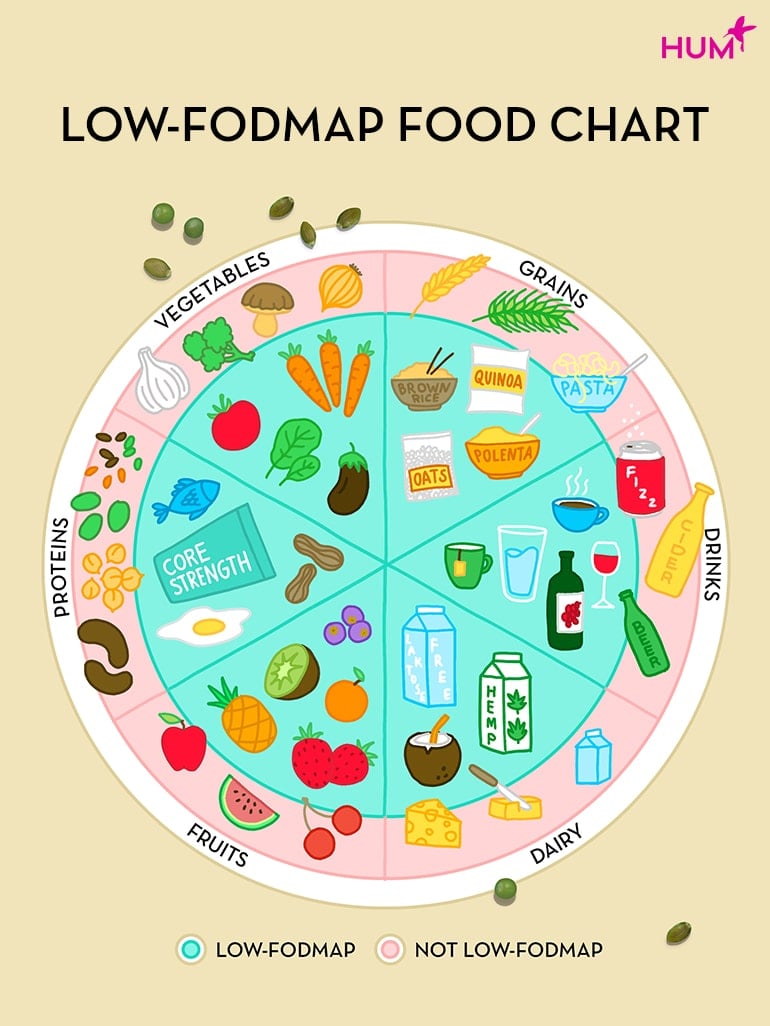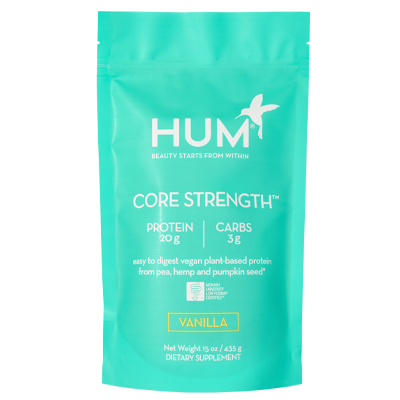What Is a Low FODMAP Diet? A Dietitian Explains

What are FODMAPs?
FODMAP stands for fermentable, oligosaccharides, monosaccharides, and polyols. Put more simply, FODMAPs are certain types of carbohydrates that are found in some foods.
These short-chain carbohydrates are resistant to digestion; instead of being absorbed in your small intestine they continue down your digestive tract. In some individuals, FODMAPs may produce gas and other digestive issues.
Common FODMAPs include:
- fructose: a simple sugar found in many fruits + vegetables and most added sugars
- lactose: the carbohydrate found in dairy milk
- fructans: found in many foods including wheat, spelt, rye + barley
- galactans: found in beans + legumes
- polyols: found in sugar alcohols like xylitol, sorbitol + maltitol; or in smaller amounts in some fruits + vegetables

HIGH + LOW FODMAP FOODS
Examples of high FODMAP foods include:
- apples
- onions
- garlic
- artichokes
- Brussels sprouts
- beans
- avocado
- legumes
- milk
- almonds
- beer
- wine
- soda
- pasta
- cereal
- meat
- fish
- cheese
- oils
- many gluten-free bread products
Are FODMAPS bad for you?
Not necessarily. When we look at the types of foods that are higher in FODMAPs, most of them are very healthy. Many foods that are rich in them are also rich in prebiotics, which encourage the growth of good bacteria in the gut.For most individuals, high FODMAP foods aren’t a problem—but some people are sensitive to them. This is especially true in those with irritable bowel syndrome (IBS).
FODMAPs draw water into your digestive tract, which can increase bloating if you’re sensitive to these types of foods. For some individuals, if you eat too much of them, they can hang around in your gut and ferment, which causes more gas and bloating. In these cases, following a low FODMAP diet may be beneficial.
But even in these cases, we don’t want to completely get rid of FODMAPS in the diet forever.
What is a low FODMAP diet?
A strict low FODMAP diet temporarily eliminates high FODMAP foods before slowly reincorporating them in small doses to find a personalized level of comfort.
There are three distinct phases in this diet:
1. Restriction
In the first phase of a low FODMAP diet, you’ll stop eating high FODMAP foods for a few weeks and log your symptoms. In general, the recommendation is that you completely eliminate all high FODMAP foods for two weeks. This phase should be followed as strictly as possible, as it’ll be hard to identify which FODMAPs are causing issues if you only eliminate some high FODMAP foods but keep others.
If these foods are contributing to your problems, then you’ll likely experience relief of symptoms shortly after cutting them in your diet.
Note: This process is best executed under the guidance and support of a registered dietitian, doctor, or nutritionist who’s familiar with a FODMAP protocol.
2. Reintroduction
After restricting high FODMAP foods, you’ll start to reintroduce foods one at a time. (Again, this is best to do with the guidance of a doctor or dietitian.) You may discover that you’re sensitive to only one or two types of FODMAPs and from there, you can figure out which foods trigger your digestive problems.
3. Integration
Having identified your specific FODMAP sensitivities, you can then create a diet that gives you all the nutrients you need but includes only the FODMAPs you can handle in acceptable doses.
For example, blueberries are high in fructans but are likely okay in small servings of a quarter cup. Therefore, individuals who are reactive should be able to tolerate a quarter cup of blueberries, but may have issues in larger doses.
Remember, the goal of a low FODMAP approach is not to eliminate FODMAPs completely, but rather to figure out what each person can safely tolerate.









